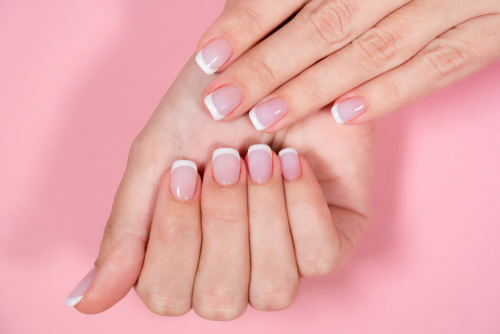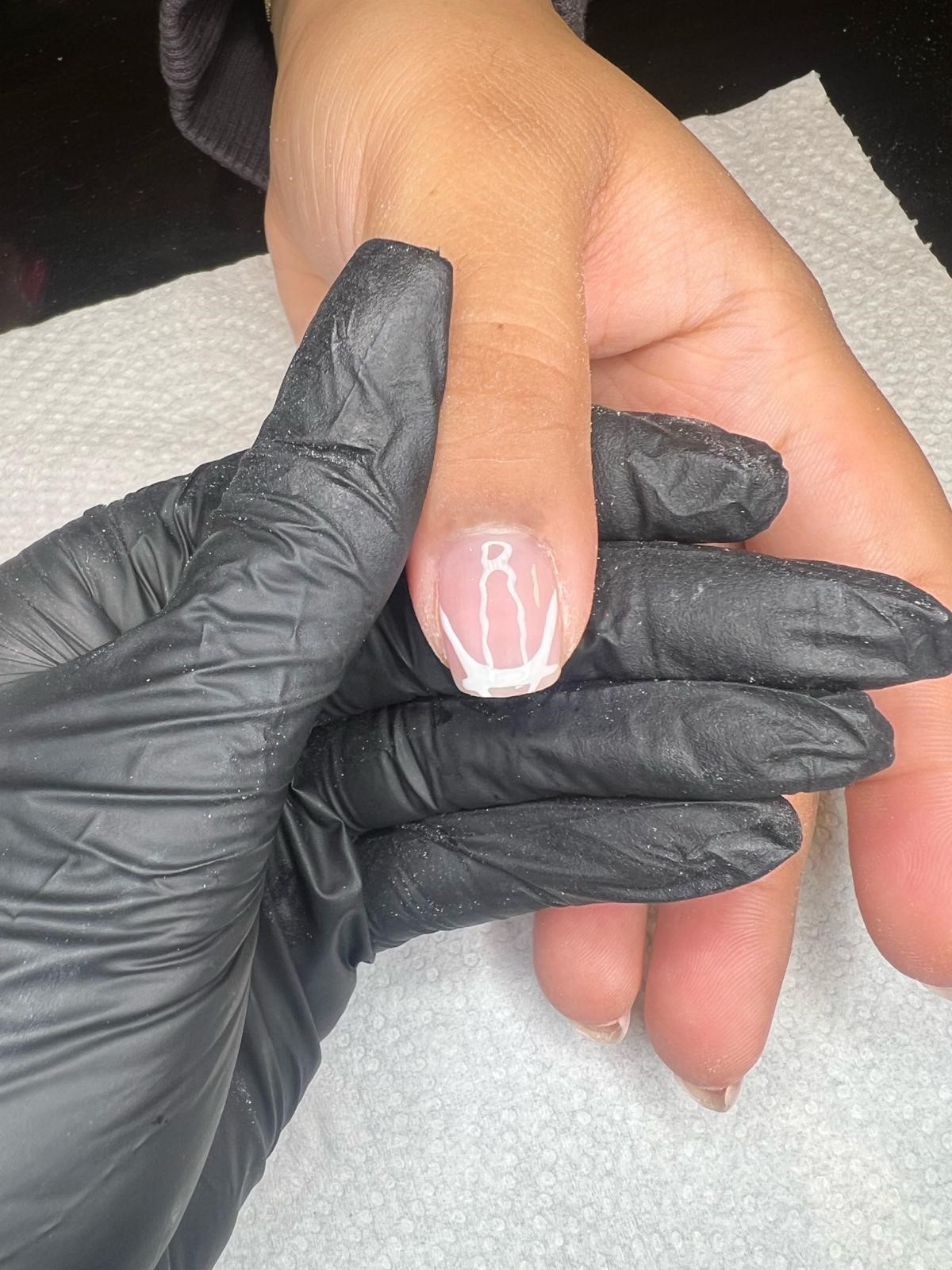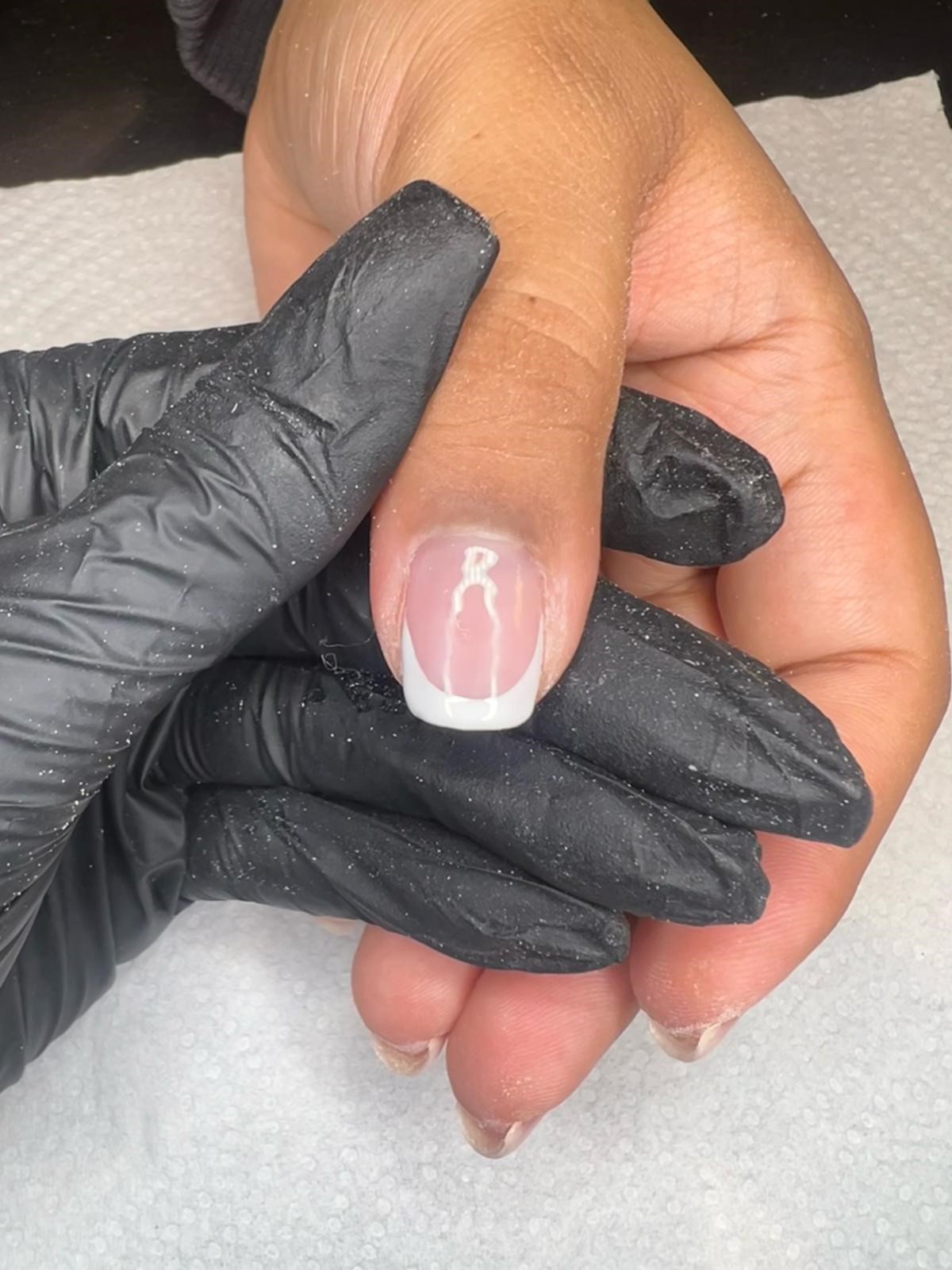Have you ever had a client say “Oh, I’ll just go for something quick and easy,” and then ask for a classic French, thinking they are doing you a favour? While clients might think a French mani is the easy or quick option when it comes to nail art, thanks to the precision needed to pull off the design, the classic French can keep some non airbrush-practising nail techs up at night.
“I’ve been in classes where nail techs have cried because they didn’t want to do French,” says educator and owner of Nailspa, Belinda Price. “I’ve been in salons and watched clients ask for French and either be talked out of it or told the salon doesn’t do it.”
“The assumption is that French is hard, but the reality is with a little practice it is easy to achieve and can offer many benefits, such as increased turnover by charging for French as an add-on, and new clientele who seek you out because you are well known for being a master of it.
Common French faux pas
“A good French can be one of the hardest free-hand services to offer,” explains Catherine Jimenez, Gelish educator and home salon owner.
“It involves a very steady hand and making sure the smile line is crisp, clean, curved and suits the nail that you are working on. I see a lot of smile lines that are straight across, which isn’t flattering. The other challenge is getting the points of the smile line to be at the same level on the sidewalls and then for the middle of the curve to be at the centre of the nail.”
Another issue can be the thickness in which the gel or polish is applied to create the French tip. If you’re not careful, the tip of your French could end up looking bulky due to excess product build-up – so not chic!
Also, the curve needs to be like a soft V, and how extreme that is depends on how long the nail plate is. The larger the nail plate, the more extreme the V, The shorter the nail plate the softer the V will be.
The right nude
Choosing the right base colour is important to achieve the perfect French mani, accessible to all skin tones, advises Julie-Anne Larivière, who is the owner of Sketched by J-A Nails in Kent and a Salon System nail expert.
“For fair skin tones, I like to use a sheer or creamy pink, for medium or olive skin tones, a pale taupe or a soft peach-like shade, and for dark skin tones, a rose beige or a cocoa-mocha tone,” she adds.
“Not all products are equal,” adds Price. “Some pink shades discolour, some whites yellow, stain or chip. Use the whole system of one brand, with a matching lamp, for best results.”
Mattify it
“The best trick is to mattify the base with a matte top coat before applying your French,” says Gelish educator and Liverpool-based home salon owner Jenni Hession. “This will help to paint smooth lines and stop the gel from bleeding.”
“It also means that if you need to remove and reapply, you don’t ruin the base colour,” says Jimanez who also likes to work over a matte top coat.
No matte top coat? No problem. Chantelle Vermont, co-founder and chief executive of Clawgasmic Nail Network, mattifies the base by wiping over the base colour with cleanser or alcohol.
“Removing the tacky layer of the gel polish will also help stop bleeding and allow the liner or art brush to glide over the base more easily,” she says.
The right brush
“Using a striper brush is a game changer,” says Vermont, who remembers when individual brushes were not so common, and techs would often have to use the brush straight out of the bottle to do a French.
All of the experts we spoke to have found a friend in their liner/striper brush, which has become the key to helping them achieve their French. Many favour a length of around 11mm to achieve a deep smile line and seamless curve.
Hession likes to use a gel striper brush for creating the fine lines of the French and a square gel brush to wipe away any excess gel polish and perfect the smile line if needed. “I can always go back in with my mini gel striper brush if needed to make the lines more crisp,” she adds. “Never overload your brush, only very little product is needed for a French manicure.”
If any cleaning up is needed, Jimenez has a top tip: “I use a gel brush with a little bit of top coat on it. This helps my brush glide over the nail plate while maintaining the crispness.”
It’s also important to look after your brushes. “If you use a nail art or clean-up brush, take care of it, and keep it just for French, so no glitter or dark shades can contaminate your product,” says Price.
The right product
The consistency of gel polish can sometimes make detailed or precise nail art like the structure of the French mani tricky. That’s why gel paint commonly referred to as “art gel” was invented.
“Using art gel is one of the other tricks I give to my Nail Network members struggling with French,” says Vermont.
Gel paints differ from gel polish as they are thicker and stay in place whereas gel polish has a tendency to run in order to self-level. This makes it ideal for achieving thin and crisp smile lines.
Gel paint also often comes in a pot rather than a bottle and should be decanted onto a nail art palette to allow you to run a thin layer of product through the length of the brush to create long and crisp lines.
It can achieve a one-stroke application, which can help avoid the bulking tip issue many techs struggle with; so if that’s you, consider using a gel paint.
Mark it out
The French tip has evolved beyond the classic white tip, so mix it up with seasonal colours.
If you’re not confident with creating a clean and consistent design on all 10 fingers, then mapping out your French is a great solution.
“Using a gel striper brush, I always start with two diagonal lines,” says Hession. This will determine how deep you want your French smile line to be. Then, I draw a horizontal line at the point where I want the bottom of the arch to be, right across the two you have already painted.”
The angle of the horizontal lines will determine how dramatic the smile line will be. Closer to the side of the nail will mean a higher smile arch. Closer to the middle or crossing over will create a lower arch.
After drawing the horizontal line, you will have an angular outline of the French design. Then use your liner to soften the smile line and fill in the gaps.
Jimenez also likes to draw a template first: “I draw one line in the centre of the nail, with two either side and then dots at equal lengths down the sidewall,” she says.
“I then draw a line connecting the dots on the sidewall to the ones either side of the centre and a line across each of these. I can then soften this to create a central, even smile line and fill that in with the gel polish.”
Meanwhile, Vermont’s method is to start in the middle by drawing a point in the centre of the nail and dragging it down to create the smile line on one side – and then mirroring that on the other side.
“Do not apply your colour too thickly,” warns Jimenez. “It’s much better to build it up gradually.” If you can use one coat for the French design with gel paint or polish then you will have less chance of the product bulking at the tip or in other areas.
Otherwise, a clean brush can be used to remove some excess. Don’t forget to flash cure in between fingers to avoid your previous artistry getting smudged.
Try out a few different techniques and follow some educators on social media to see how they map out their French manicures. There are so many ways to achieve a great result so don’t get discouraged if one doesn’t work for you.
Top it off
“I like to finish French with two coats of top coat to level off the polish,” says Jaz Moger, owner of Paint by Jaz in East Sussex and a Salon System expert. Not only does this help create a seamless transition between the French design and the rest of the nail, it will also smooth out the overall look.
“We teach our students to encapsulate the French manicure with a clear strengthening layer over the top, as this helps to create a smooth apex and reduces the chances of having a bulbous end to the manicure,” says Stella Cox, Re:New beauty educator. “This also gives strength to the main stress point in the nail, which is usually where the smile line is.”
“I use clear structure gel,” adds Jimenez. “This acts as a great surface leveller and also adds strength to my application.”
Manage expectations
It’s important to educate your clients on the work that goes into your art to keep them happy and returning. This also helps them book in the right treatment time and understand your prices.
“All of my clients know when they come to me it’s not going to be a quick job, especially with a French design,” says Moger. “Always explain to your client that this design will take an extra half an hour and check if that’s okay with them. If not, then unfortunately they will have to go for a simpler design.”
“Become slick at French application and you will soon be cheering when customers ask for it, rather than shying away,” says Price. “Think of the benefits; eight French upgrades a day at a minimum charge of £5 extra equals £40 per day extra turnover. You could actually charge more than £5 for the upgrade – charging £10 would give £80 per day extra turnover.”







